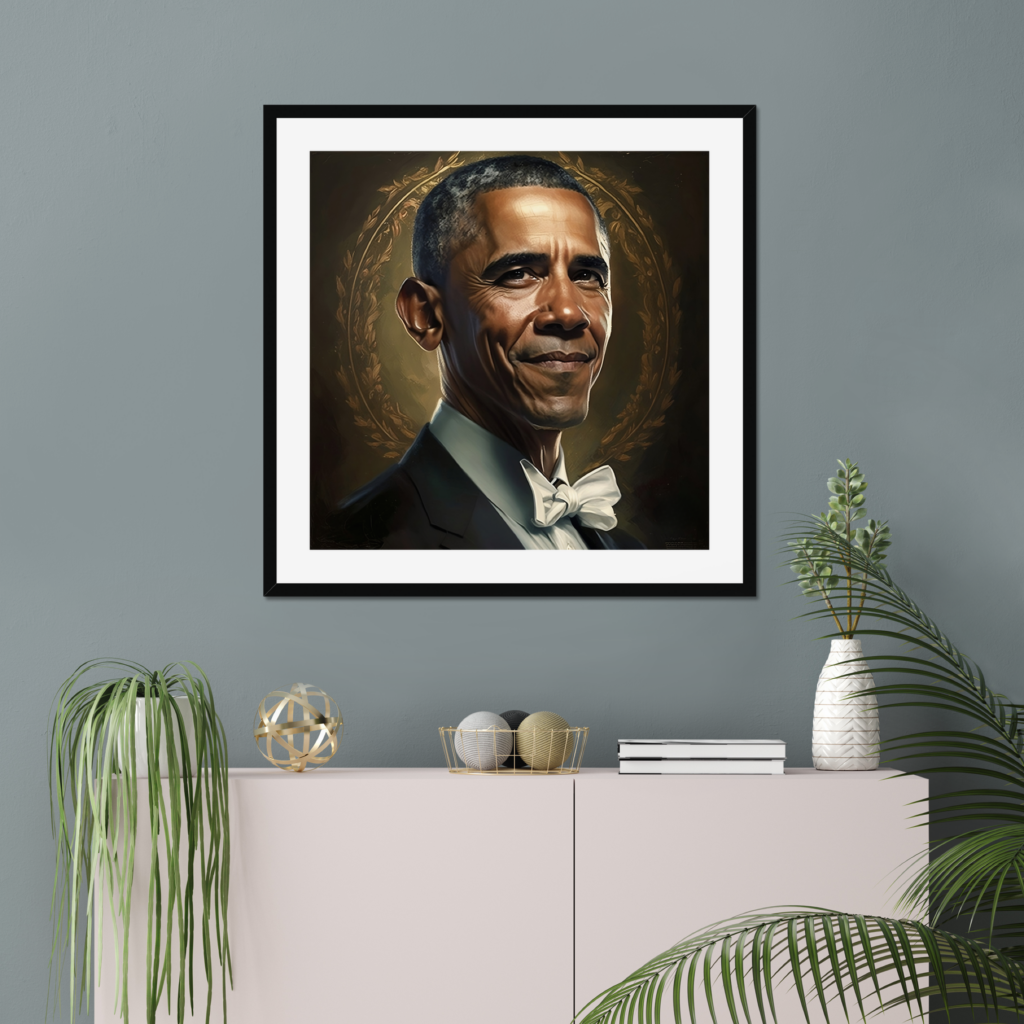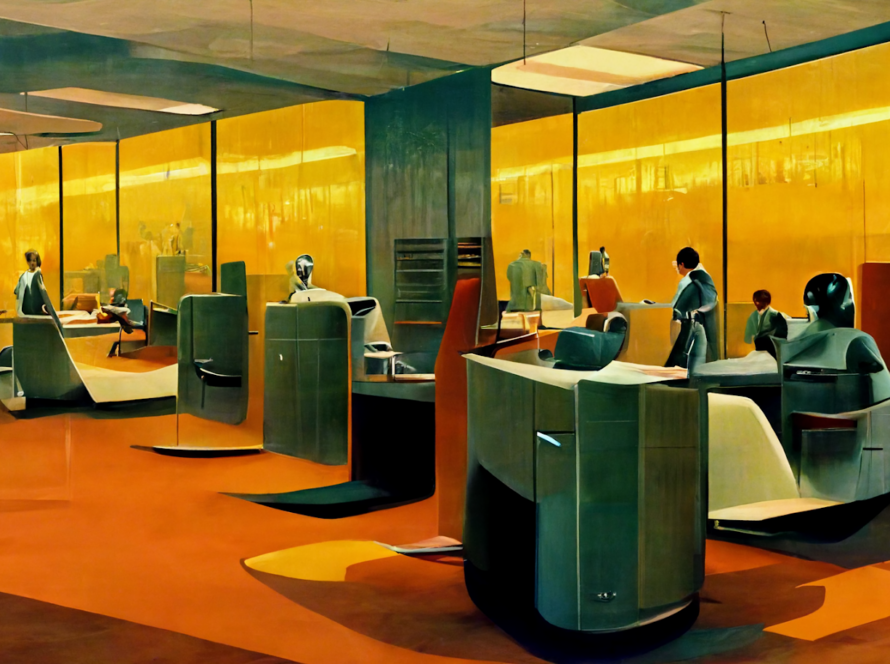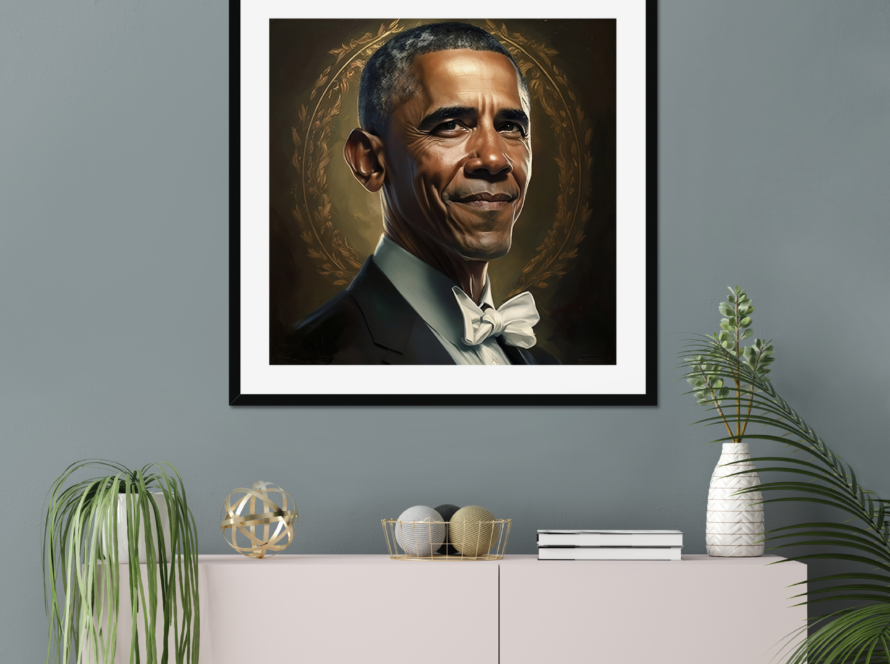What is AI Art, and how is it created?
AI art, or artificial intelligence art, represents a pioneering field of art where machine learning and AI algorithms are used to create unique pieces of art. This cutting-edge technology is reshaping the boundaries of creativity, raising profound questions about the nature of art and the role of human in creative processes.
At the core of AI art creation is a specialized form of machine learning known as a Generative Adversarial Network (GAN). GANs are composed of two parts: a generator, which produces images, and a discriminator, which evaluates these images. The generator and discriminator work in tandem, continually learning and adapting through this iterative process1.
To create AI art, the machine learning model is initially trained on a diverse set of images. This dataset can contain anything from classical Renaissance paintings to contemporary abstract works, providing the AI with a broad overview of artistic styles and techniques2.
As the AI absorbs this visual information, it begins to understand various patterns and principles intrinsic to the artwork. Following the training phase, the AI then uses this knowledge to generate new and original pieces of art.
The creation of AI art isn’t devoid of human touch, despite the technological underpinning. Human artists play a crucial role in curating the training data, setting the parameters for the AI, and often interpreting and refining the outputs, thereby guiding the direction of the AI’s creativity3.
AI’s foray into the art world has sparked discussions about the authenticity of AI-generated art and its implications for the future of creativity. Critics question whether AI, an artificial construct, can truly possess the creative spark traditionally associated with human artists4.
As AI continues to evolve and mature, its potential applications within the field of art will only expand, promising exciting developments for artists and art enthusiasts alike5.
How has AI impacted the Art industry?
Artificial Intelligence has left an indelible mark on the art industry, enabling the emergence of new art forms, redefining traditional creation processes, and prompting heated debates about the nature of art and creativity.
AI has democratized the field of art creation, making it accessible to anyone with a computer and an internet connection6. In contrast to traditional art forms that often require specific skills and resources, AI art empowers individuals to generate unique pieces, promoting diversity and inclusivity within the art world.
Moreover, AI introduces an element of unpredictability and serendipity to the creative process. Since AI can generate unforeseen results, it brings about a sense of exploration and discovery to art creation, leading to the birth of a new art movement, algorithmic art7.
The application of AI extends beyond art creation to curation and exhibition. AI has been employed to analyze visitor data to suggest personalized art experiences, enhance engagement, and enrich cultural understanding8. In a bid to preserve our cultural heritage, AI has also been used to recreate lost or damaged artworks.
From a commercial perspective, AI has reshaped the art market. The first AI-generated artwork, ‘Portrait of Edmond de Belamy’, was sold at Christie’s, a renowned auction house, marking a milestone in the intersection of AI and art9.
However, the incursion of AI in art has not been without controversies. Critics question whether AI-generated art can truly be considered ‘art’ in the conventional sense, sparking debates about creativity, authorship, and originality10.
What is the controversy surrounding AI in art?
The integration of AI into the art world has been a catalyst for considerable debate and controversy, calling into question long-held assumptions about art, creativity, and authorship.
The question of originality forms the crux of many debates surrounding AI art. Can a piece of artwork, generated by a machine learning model trained on a dataset of existing artwork, truly be considered original? The machine, after all, has no subjective experience or emotions; it merely identifies patterns in the training data and generates output based on those patterns. Critics argue that this process lacks the human touch, the emotional intent, which they believe is integral to the creation of authentic art.
Another contentious issue is that of authorship. In traditional art, the artist is clear – it’s the individual who physically created the piece. However, with AI art, the lines are blurred. If an AI creates a piece of art, who is the artist? Is it the AI, the developers who created the AI, or the artist who curated the data used to train the AI? This question has significant implications for intellectual property rights and the commercialization of AI art.
There are also concerns about the impact of AI on the livelihood of traditional artists. As AI becomes increasingly capable of creating art – and as that art becomes increasingly valued – some fear that human artists might be pushed out of their own field.
The controversy surrounding AI in art underscores a broader discussion about the role of technology in society. As AI continues to advance, these discussions are likely to intensify, challenging us to reconsider our definitions of art, creativity, and originality.
Are AI-created arts considered original works?
The question of whether AI-created art can be considered original work is a deeply philosophical one that dives into the essence of what we consider “art” and “originality”. The answer can vary greatly depending on one’s perspective.
From a technical standpoint, AI-created art can be considered original in the sense that the AI can produce images that are different from the ones it was trained on. The AI doesn’t merely replicate the training images; it generates new combinations and interpretations based on the patterns it has learned.
However, from an artistic perspective, originality is often linked to the intention and emotion of the creator. Since an AI doesn’t have feelings or intentions in the way humans do, some argue that its creations lack the emotional depth and personal touch that often characterize human art.
Moreover, the training process for AI art involves learning from a dataset of existing artworks. Critics argue that this process makes AI art derivative by nature, as it is fundamentally based on patterns and styles gleaned from human-created art.
These differing viewpoints illustrate the complexity of this debate. As AI continues to evolve and its role in art creation continues to expand, the discussion about originality in AI art will likely become even more nuanced and multi-faceted.
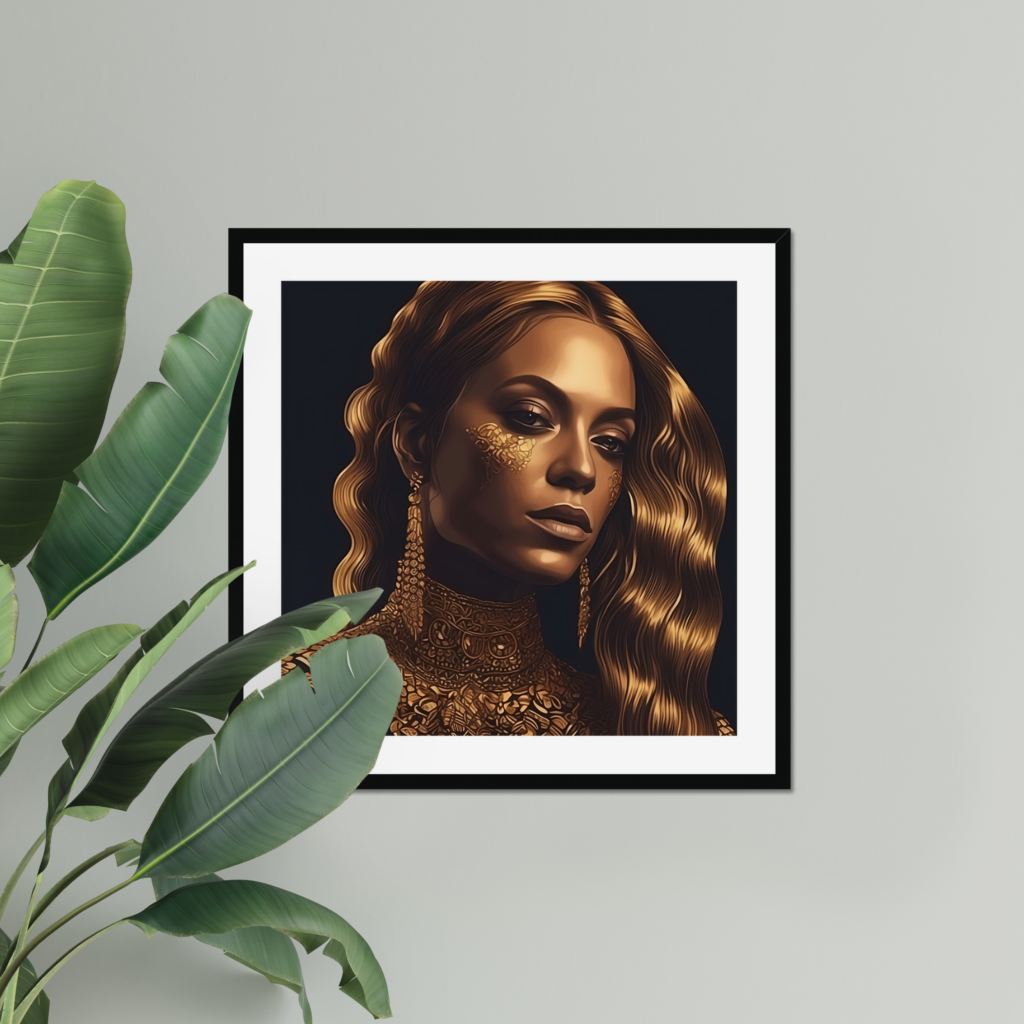
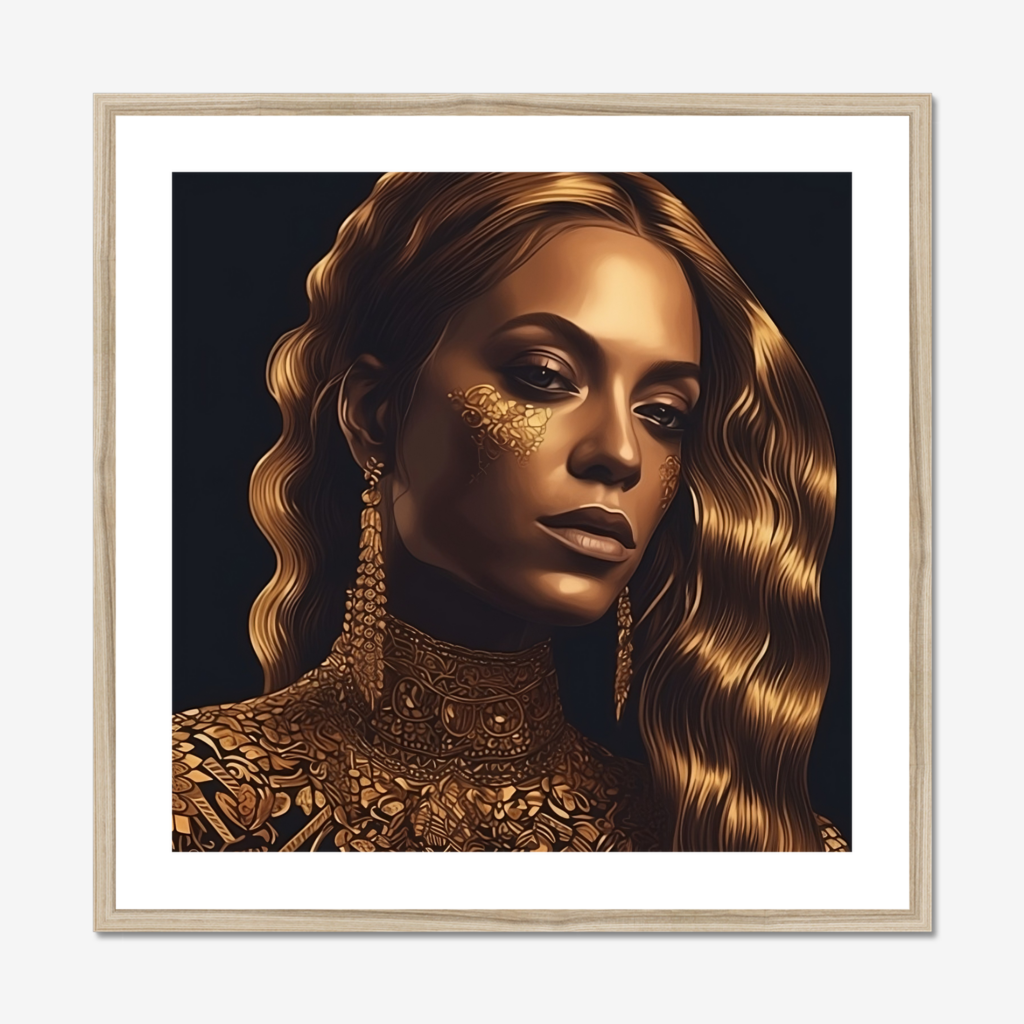
How does the process of creating AI art work?
Creating AI art involves a unique blend of technology and artistry, combining the latest in machine learning techniques with creative inputs from human artists. The process generally unfolds in several key stages:
Data Collection: This is the first step in the process, where a diverse range of art images are collected to serve as the training dataset for the AI model. This dataset can include various types of art from different eras, styles, and artists.
AI Training: In this phase, a machine learning model, typically a Generative Adversarial Network (GAN), is trained on the collected data. The AI absorbs the visual information from the dataset, learning various artistic styles, patterns, and techniques present in the artworks.
Art Generation: Once the AI has been adequately trained, it uses its learned knowledge to generate new pieces of art. This often involves a creative process where the generator network within the GAN creates new images, and the discriminator network evaluates these images based on its training.
Human Involvement: Although the AI does much of the heavy lifting, human artists are integral to the process. They curate the training data, set the parameters for the AI model, and often provide final touches or interpretations to the AI-generated outputs.
Despite the technical sophistication of this process, it’s important to note that AI art is not a mere product of cold computation. There’s a significant amount of creativity, decision-making, and artistic judgment involved, making the process of creating AI art a true marriage of art and technology.
What’s the future of AI in the Art Industry?
The future of AI in the art industry is incredibly promising, with potential to transform how art is created, appreciated, and marketed. Here are a few key trends we may see as AI continues to infiltrate the art world:
Greater Artistic Possibilities: As AI technology continues to evolve, we’ll likely see increasingly complex and sophisticated AI art. This could open up new artistic possibilities and styles, pushing the boundaries of what’s possible in art.
Democratization of Art: AI can make the process of creating art more accessible, allowing anyone with a computer to generate unique pieces. This democratization could lead to a greater diversity of voices and styles in the art world.
New Business Models: AI is also poised to transform the business side of art. AI-generated art has already started to command high prices at auctions, suggesting that there could be significant market demand for these works. Additionally, the blockchain technology underlying many AI art platforms could offer new methods for tracking provenance and ensuring authenticity.
Rethinking Artistic Value: As AI becomes a more prominent force in the art world, we may need to rethink our ideas about the value and meaning of art. Is a piece of art valuable because of the labor and creativity that went into it, or because of the end product? As AI-generated art becomes more common, these are questions we’ll need to grapple with.
However, it’s worth noting that the future of AI in art isn’t without potential challenges. As AI technology continues to evolve, we’ll need to confront issues related to copyright, ethics, and the role of human artists in an increasingly automated world. Despite these challenges, the future of AI in the art industry remains a fascinating and exciting prospect.

How has AI art been received by the art community and the public?
The reception of AI art in the art community and among the public has been mixed, characterized by fascination, skepticism, excitement, and even fear.
Many in the art community are intrigued by the possibilities that AI brings to the table. The ability of AI to generate unique and interesting artworks, its capacity for learning and evolution, and the new dimensions of creativity it introduces, all contribute to a sense of fascination and excitement.
There are artists and curators who have wholeheartedly embraced AI, using it as a tool to push the boundaries of artistic expression. They view AI as a new medium, similar to the advent of photography or digital art, opening up unexplored avenues for creativity and innovation.
However, alongside the enthusiasm, there’s also a considerable amount of skepticism and concern. Some traditionalists question whether AI-generated works can indeed be considered art, given that the machine lacks the emotional depth and intent typically associated with human creativity.
There are also concerns about authorship and originality, as AI art often involves using a dataset of existing artworks to train the machine learning model. This leads to debates about whether AI-generated art is truly original, or simply a regurgitation of existing styles and patterns.
Public reception has mirrored these mixed sentiments. While some are thrilled by the novelty and intricacy of AI art, others express concerns about the potential devaluation of human creativity and the loss of the personal touch that characterizes traditional art.
What are some notable examples of AI Art?
AI art has produced several notable and groundbreaking works that have gained significant attention in the art world and beyond.
Portrait of Edmond de Belamy: This artwork is one of the most famous examples of AI art. It was created by a Paris-based art collective named Obvious using a GAN. In 2018, it was sold at Christie’s auction house for an astonishing $432,500, significantly exceeding its initial estimate.
“The Next Rembrandt”: In this project, a team of data scientists, developers, engineers, and art historians used AI to create a new artwork in the style of the Dutch master Rembrandt. The AI analyzed 346 of Rembrandt’s paintings to create a completely new piece that mimicked the artist’s style.
Ai-Da Robot: Ai-Da is the world’s first AI humanoid artist. She can draw, paint, and even create sculptures. Using AI algorithms and a robotic arm, Ai-Da creates artwork based on what she “sees” with her camera eyes.
DeepArt and DeepDream: These are online platforms where users can upload photos and transform them into the style of famous artworks or create entirely new pieces using AI algorithms.
These examples not only demonstrate the capabilities of AI in creating art but also provoke discussions about the nature of art, the definition of creativity, and the role of AI in our society.
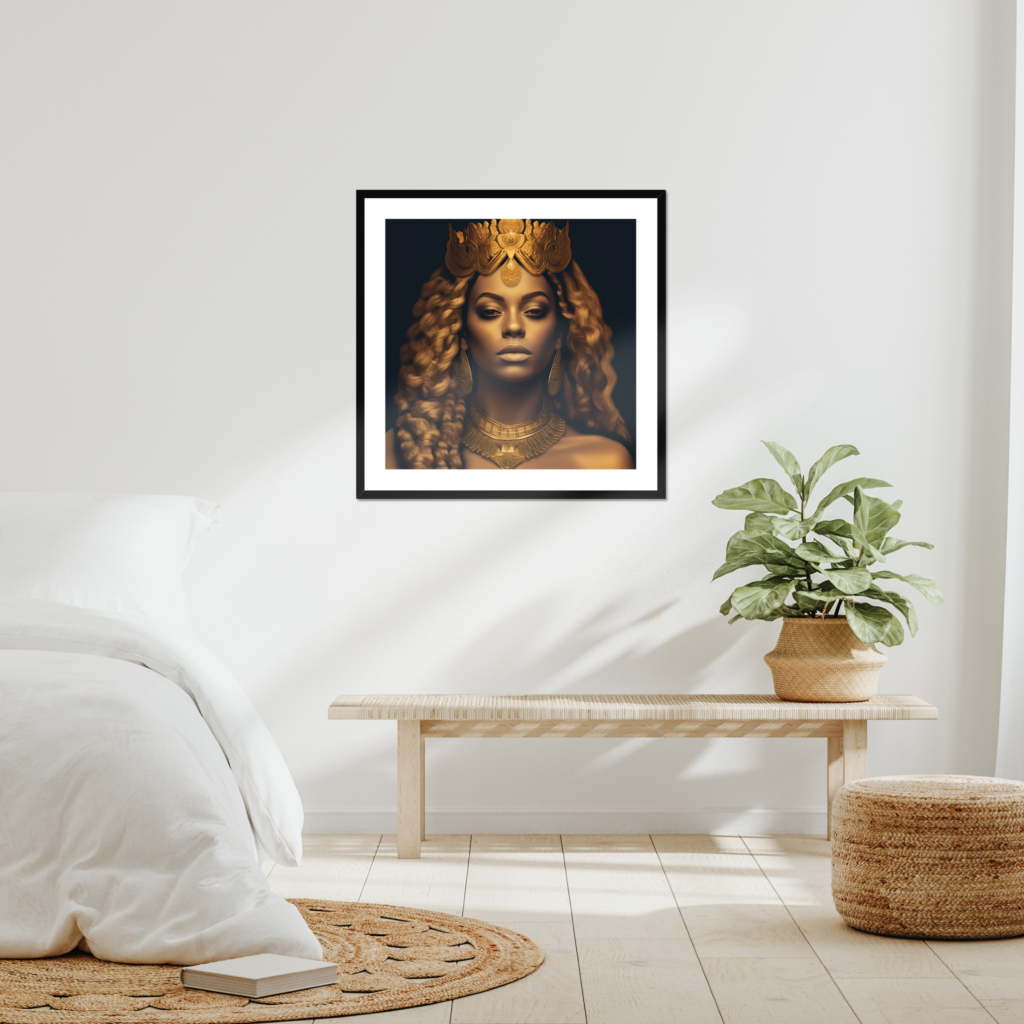
How is the value of AI Art determined in the market?
The value of AI art in the market is determined by a complex interplay of factors, much like traditional art. However, the nascent and unique nature of AI art introduces some additional considerations.
At a basic level, the value of AI art is influenced by factors such as the aesthetic appeal of the artwork, the reputation of the AI or the artists involved, the novelty of the technology used, and the narrative or story behind the artwork.
Market dynamics also play a critical role. The demand for AI art has been growing, driven by interest in new technology and the novelty of AI-created pieces. The limited supply of high-quality AI art can also drive up prices.
Significant attention or publicity can greatly influence an AI artwork’s value. For instance, when ‘Portrait of Edmond de Belamy’ was auctioned at Christie’s, the significant media attention likely played a role in its high selling price.
However, the valuation of AI art is still a contentious issue. Some critics argue that the hype around AI art can lead to inflated prices that don’t necessarily reflect the artistic value of the work. This mirrors broader debates in the art world about the relationship between price, value, and artistic merit.
As the AI art market continues to evolve, so too will the mechanisms for valuing these works. It’s an emerging field, and much remains to be seen about how the value of AI art will be assessed in the long term.
What ethical concerns arise with the use of AI in art?
The use of AI in art brings to the forefront a host of ethical considerations that must be addressed as this field continues to evolve.
Firstly, there are concerns related to authorship and copyright. If an AI generates an artwork based on a dataset of existing artworks, who owns the rights to the new piece? Is it the creators of the AI, the artist who provided the training data, or the AI itself?
In addition, there are issues of transparency and authenticity. Buyers of AI art have a right to understand the process by which the artwork was created, including the role that humans played in guiding the AI and refining its outputs.
The use of AI in art also raises questions about the devaluation of human creativity. As AI becomes increasingly capable of creating art, there’s a risk that the value of human-created art could be undermined, leading to job losses for artists.
Moreover, the rapid advancement of AI technology could potentially lead to AI-generated art flooding the market, diluting the uniqueness and value of each piece.
Finally, there are broader societal concerns about the increasing automation of creative tasks. While AI has the potential to democratize art creation, it could also exacerbate inequalities if access to AI technologies is restricted to a privileged few.
Addressing these ethical concerns will require careful thought and regulation. As we continue to navigate the exciting but complex intersection of AI and art, it’s crucial that we consider not just the technological possibilities, but also the ethical implications.
Can AI Art be considered a form of NFT?
Yes, AI art can indeed be considered a form of Non-Fungible Token (NFT), and in fact, this has become one of the prominent avenues for selling and buying AI art.
NFTs are a type of digital asset that represent ownership of a unique item or piece of content, using blockchain technology. Each NFT has specific information or attributes that make it unique and thus not interchangeable with other tokens, making them particularly suited for certifying and trading unique artworks.
AI artworks, being digital in nature, are particularly suited to be sold as NFTs. Each piece of AI art can be tokenized as an NFT and then bought, sold, and traded on various online marketplaces. The blockchain provides a transparent and immutable record of each artwork’s provenance, adding to the trust and security in the process.
One of the primary benefits of NFTs for AI art is that they provide a mechanism for selling digital art in a way that wasn’t possible before. Artists can sell their AI-generated artworks directly to collectors without needing a physical medium, and they can also program royalties into the NFT so they receive a percentage of sales whenever the artwork is sold to a new owner.
However, just like with other forms of art, the NFT market for AI art has its challenges. These include concerns about copyright infringement, environmental impact of blockchain transactions, and market volatility. Despite these challenges, the fusion of AI art with NFTs represents a significant development in the digital art world.
| Questions | Summary |
|---|---|
| What is AI Art, and how is it created? | AI art involves using machine learning, specifically Generative Adversarial Networks (GANs), to create unique art pieces. The AI is trained on a dataset of existing artworks and then generates new art based on the learned patterns and styles. |
| How has AI impacted the Art industry? | AI has democratized art creation, introduced unpredictability to the creative process, transformed art curation and exhibition, and impacted the art market. However, it has also sparked debates about creativity, authorship, and the essence of art. |
| What is the controversy surrounding AI in art? | Controversies around AI art revolve around questions of originality, authorship, the emotional intent behind art, and the implications for traditional artists. |
| Are AI-created arts considered original works? | Technically, AI art is original in the sense that the AI generates new combinations and interpretations based on learned patterns. However, critics argue that it lacks the human emotional intent and is fundamentally based on existing artworks. |
| How does the process of creating AI art work? | Creating AI art involves data collection, AI training, art generation, and human involvement. |
| What's the future of AI in the Art Industry? | The future of AI in art includes greater artistic possibilities, democratization of art, new business models, and rethinking artistic value. |
| How has AI art been received by the art community and the public? | Reception of AI art has been mixed, with feelings of fascination, skepticism, excitement, and concern. |
| What are some notable examples of AI Art? | Notable examples include 'Portrait of Edmond de Belamy', 'The Next Rembrandt', Ai-Da Robot, DeepArt, and DeepDream. |
| How is the value of AI Art determined in the market? | The value of AI art is influenced by aesthetic appeal, reputation, novelty, market demand, and publicity. |
| What ethical concerns arise with the use of AI in art? | Ethical concerns include issues of authorship, transparency, devaluation of human creativity, market dilution, and access to AI technologies. |
| Can AI Art be considered a form of NFT? | Yes, AI art can be tokenized as NFTs and traded on various online marketplaces. |
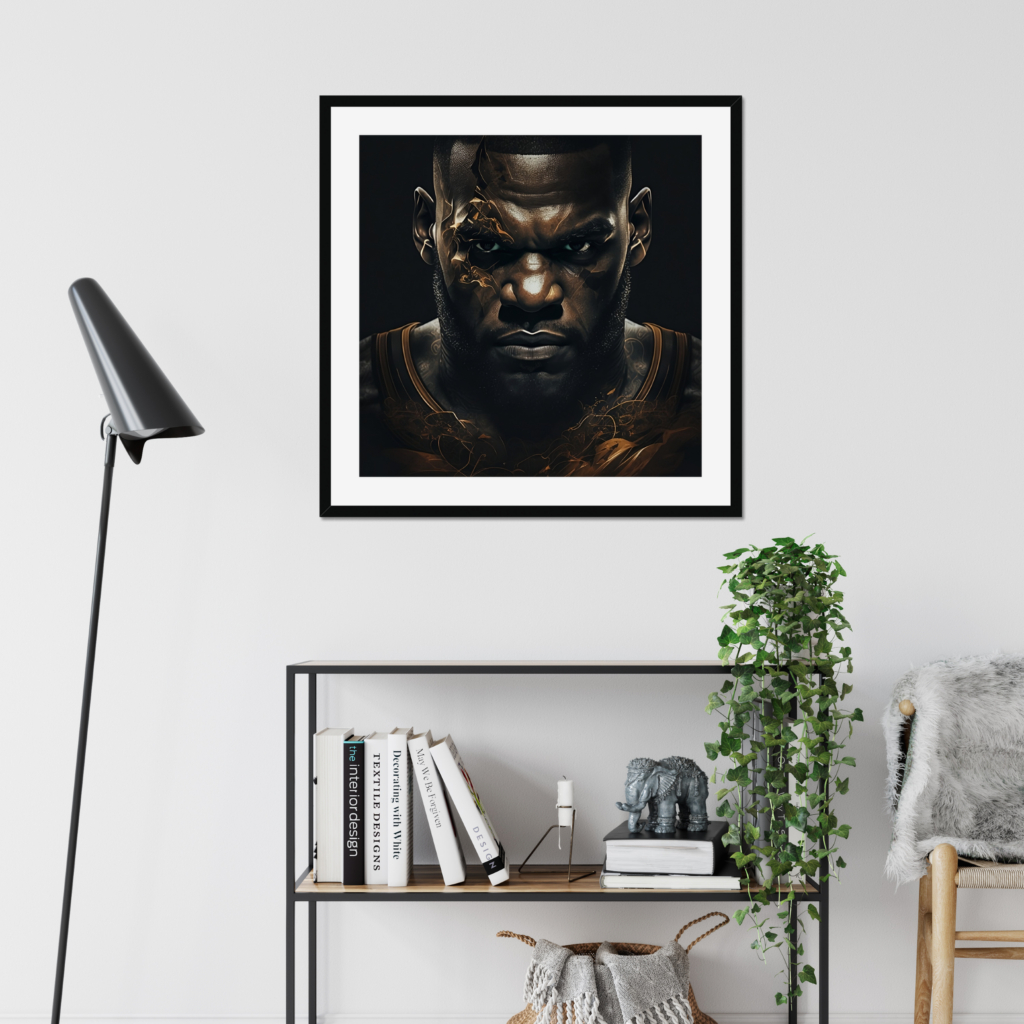
FAQ – AI Art
What is AI Art?
AI Art, or Artificial Intelligence Art, is a type of art that is created with the assistance of Artificial Intelligence technologies. This often involves machine learning algorithms that analyze a set of data and generate new pieces of artwork based on what they’ve learned.
How is AI Art created?
AI Art is created using machine learning algorithms, usually Generative Adversarial Networks (GANs). These algorithms are trained on a dataset of existing artworks, and they generate new pieces based on the patterns and styles they identify in the training data.
Is AI Art considered original?
The originality of AI Art is a contentious topic. While AI Art is technically original in that it generates new pieces based on learned patterns, critics argue that it lacks the human touch and emotional intent that characterize human-created art.
How is the value of AI Art determined?
The value of AI Art is influenced by a range of factors, including the aesthetic appeal of the artwork, the reputation of the AI or the artists involved, the novelty of the technology used, and the story behind the artwork. Market demand and publicity also play a significant role.
Can AI Art be sold as NFTs?
Yes, AI Art can be tokenized as Non-Fungible Tokens (NFTs) and sold on various online marketplaces. This provides a mechanism for selling digital art and can also ensure the provenance and authenticity of the artwork.
What are the ethical concerns with AI Art?
Ethical concerns with AI Art include issues of authorship and copyright, transparency and authenticity, the potential devaluation of human creativity, and concerns about access to AI technologies.
What is the future of AI in the Art Industry?
The future of AI in the art industry includes greater artistic possibilities, democratization of art, new business models, and rethinking artistic value. However, there are also potential challenges related to copyright, ethics, and the role of human artists in an increasingly automated world.
